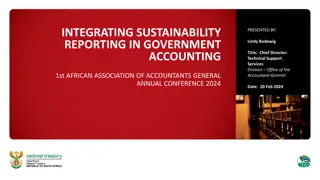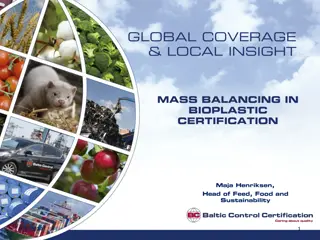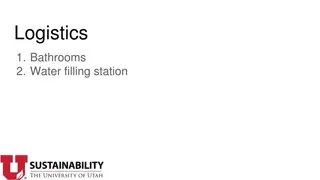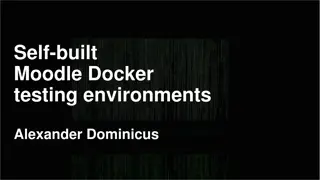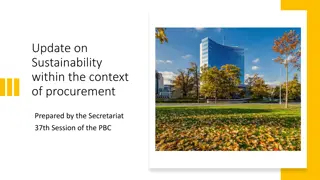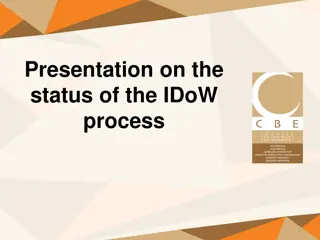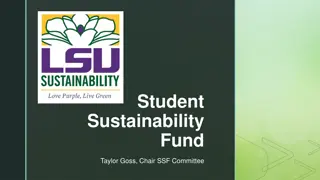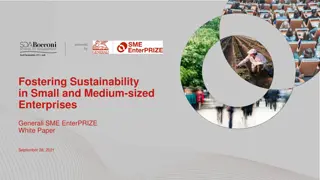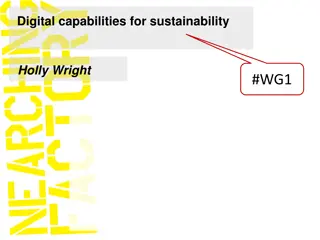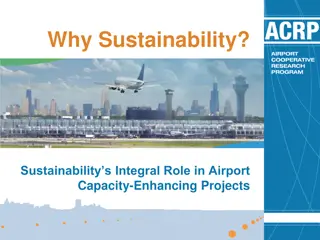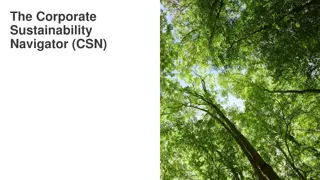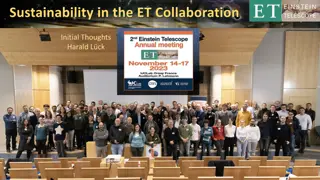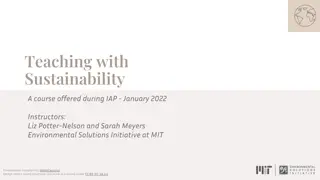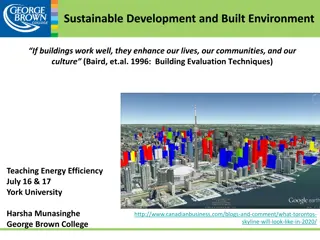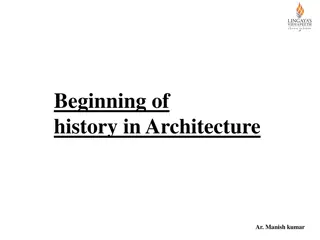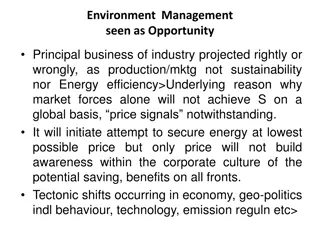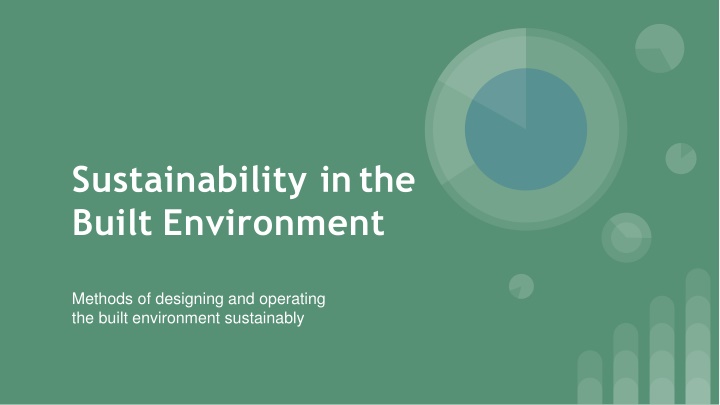
Sustainability in Built Environment: Methods for Sustainable Design
Methods of designing and operating the built environment sustainably include passive and active design strategies like orientation, natural ventilation, low-flow water fixtures, and renewable energy integration. Terminology such as Net Zero Energy/Carbon, resilience, and LEED certification are crucial for understanding sustainable practices. Embracing eco-friendly approaches and green building technologies can lead to more energy-efficient and environmentally friendly buildings.
Download Presentation

Please find below an Image/Link to download the presentation.
The content on the website is provided AS IS for your information and personal use only. It may not be sold, licensed, or shared on other websites without obtaining consent from the author. If you encounter any issues during the download, it is possible that the publisher has removed the file from their server.
You are allowed to download the files provided on this website for personal or commercial use, subject to the condition that they are used lawfully. All files are the property of their respective owners.
The content on the website is provided AS IS for your information and personal use only. It may not be sold, licensed, or shared on other websites without obtaining consent from the author.
E N D
Presentation Transcript
Sustainability in the Built Environment Methods of designing and operating the built environment sustainably
Living Sustainability What are ways that you save energy and water in your everydaylives?
Living Sustainability What are ways that you save energy and water in your everyday lives? Examples: Turning off the water while you brush your teeth Turning off the lights when you leave a room Walking, biking, carpooling, or taking public transportation (bus, metro, etc.) - - -
Terminology Sustainability Net Zero Energy/Carbon Resilience Eco-friendly LEED
Terminology Sustainability = Using resources at a rate/quantity that does not deplete those resources for future generations or the surrounding ecology Net Zero Energy/Carbon = Balancing the amount of energy you consume (or carbon you emit) with the amount of energy you produce (or carbon you sequester) Resilience = The ability to recover quickly and smoothly from failure or disaster Eco-friendly = Not harmful to the environment LEED = Leadership in Energy and Environmental Design
Sustainable Buildings -Passive Design Architecture Orientation Window-to-Wall Ratio Natural Ventilation Building Envelope Bioretention/Landscaping
Sustainable Buildings -Passive Design Natural Ventilation Window-to-Wall Ratio Orientation Building Enclosure Bioretention/Landscaping
Sustainable Buildings - Active Design Engineering System Controls / Building Automation System (BAS) Light-Emitting Diode (LED) Lighting, Daylighting, Motion/Occupancy Sensors Low-Flow Water Fixtures High-Efficiency, Demand-Controlled Heating, Ventilation, and Air Conditioning (HVAC) Renewable Energy + Battery Storage Carbon Capture & Sequestration
Sustainable Buildings - Active Design LED Lighting/ Daylighting/ Motion Sensors High-Efficiency HVAC Low-Flow Fixtures System Controls/BAS Renewable Energy + Battery Storage Carbon Capture and Sequestration
Utilities Electricity Natural Gas Water Propane Diesel Gas
The Basics ofElectricity Watt Kilowatt(kW) Kilowatt-hour (kWh)
The Basics ofElectricity Watt = 1 Joule/second (unit of energy) Kilowatt (kW) = 1,000 Joules/second (rate at which electricity consumed) Example: 60 miles per hour Kilowatt-hour (kWh) = Rate x Time (amount of electricity consumed) Example: 60 mph x 1 hour = 60 miles driven
How to Read an Electricity Bill Rate/Tariff Historic Consumption & Demand kWh Consumption kW Demand
How to Read an Electricity Bill - Rates kWh rates Energy charge Distribution charge EmPOWER Maryland Charge Public Serv. Co. Franchise Tax MD Environmental Surcharge kW rates Energy demand charge Distribution demand charge $0.0508/kWh $0.01276/kWh $0.00439/kWh $0.00062/kWh $0.000151/kWh $0.068721/kWh $4.82/kW $5.26/kW $10.08/kW



